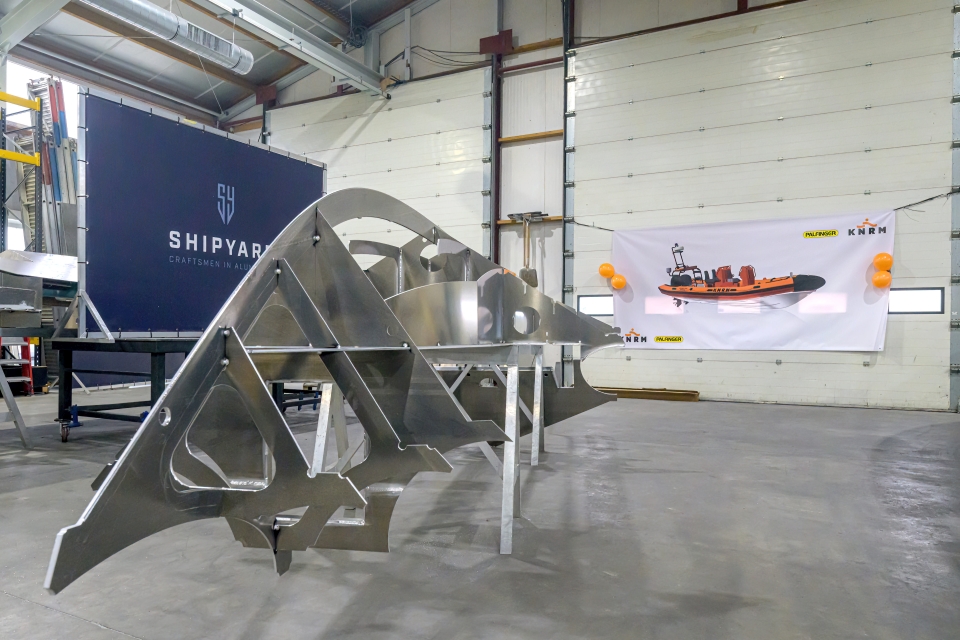On behalf of the Royal Netherlands Sea Rescue Institution (KNRM), twelve new rescue boats of a 7.5-metre class will be built over the next few years. The Chaterina D is the first boat of a new class for which the keel was laid on 27 January. The boat will enter service in 2023.
The lifeboat will replace the Atlantic 75 class, which is mainly deployed by KNRM on the Wadden Sea and IJsselmeer. The boat’s name was decided by the lifeboat’s benefactors, who also laid the keel at the start of construction.
Also read: VIDEO: KNRM rescues over 4000 people in 2022
Aluminium hull
For this 7.5-metre lifeboat class, an aluminium hull will be used for the first time. It was designed by Palfinger of Harderwijk. Construction also includes the seats for the crew and the console containing all navigation and communication equipment. The hull will have an inflatable rubber edge, making the boat a real “rigid inflatable boat”, as almost all KNRM lifeboats are. Propulsion is provided by two outboard engines of 115 hp each.
Traditionally, a coin was welded into the keel at the keel laying ceremony at the shipbuilder “Bouw en Techniek” in Dronrijp, which builds the hull for Palfinger. This tradition wishes the builders and crew of the vessel a safe journey.
Benefactors
Outfitting will take place at Palfinger Marine in Harderwijk. The first Chaterina D rescue boat can be built thanks to a donation to the KNRM by Chaterina Hollenga and Dick Veen. At KNRM, it is customary for the naming of the lifeboat to be linked to the donation. Living benefactors are always closely involved in the construction of their lifeboat. Hence, they also performed the keel laying.
For the next eleven lifeboats of this class, seven benefactors have already agreed to pay for the construction. They too will name the lifeboat according to their wishes.
Also read: VIDEO: New KNRM lifeboat passes capsize trial
Fleet renewal
Two years of preparation preceded this keel laying. It was decided to build in aluminium, which is more recyclable than the polyester of the old generation of boats. The engines are four-stroke engines that are quieter, many times more economical and produce fewer CO2 emissions. The ergonomics have also been adapted to the physique of today’s crew members, who are a lot taller compared to forty years ago.
The major fleet renewal plan of which this lifeboat is part took years of consultation and research. Apart from the twelve Chaterina D-class lifeboats, some sixty more lifeboats are to be built over the next fifteen years to replace the current fleet.








